I'm building a lamp with twelve 3x700ma RGB LEDs in it, that need to be individually PWM controlled (100-200Hz), so they can display different colours from each LED. To do this then, I think I need a separate 700ma constant-current regulator circuit for each of the 36 individual LED chips in these RGB LEDs. (NOTE: I cannot put any of these LEDs in series, as each of the 3 chips in each of the 12 LEDs needs to be independently PWM controllable.)
Since this will all be enclosed in the lamp, I would like it to be at least 80% efficient, to reduce the amount of heat it generates. There is 90 watts of power flowing to those LEDs, so even at 80% efficiency, that still means 20w of heat from the constant current regulation alone.
I've investigated a bunch of options, but I'm wondering what other options there are that I've missed.
Option 1: Resistors
One options I looked at is using 3 switching dc-dc converters, adjustable, one for each colour of LED chip, and adjusting them to just above the highest Vfwd of the 12 LEDs, and using resistors to limit the current.
Pros:
- If the Vsupply is only an average of 0.5V higher than the Vfwd of the LED, this ends up being about 80% efficient.
Cons:
- This means measuring the exact Vfwd of each LED, and buying the correct value resistor for each one.
- When the Vsupply is close to the Vfwd, small variations in the Vsupply can cause large variations in the amount of current flowing through the LED in that type of circuit.
- I don't have a whole lot of room in the lamp, and 36 3-watt resistors take up a fair bit of space.
Option 2: NSI50350 - unsuitable
Datasheet: http://www.onsemi.com/pub/Collateral/NSI50350AS-D.PDF
When I first looked at this chip, I thought that it was exactly what I need. Two of them in parallel will regulate the current to 700ma. However, after getting a handful to try, it turns out I didn't read the datasheet closely enough. Unless I turn up the supply voltage to around 8 or 9V, it only allows less than 350ma (each) through. Running a 4.0 Vfwd LED on this at 8V generates an obscene amount of heat from the regulator, so it isn't practical for my project.
I know one solution to this would be to run multiple LEDs in series, however, due to packaging reasons, there is only room for 12 LEDs in this project, (One in each hole in one of these: http://www.flickr.com/photos/xenoc/7501865510/in/photostream) and each of those 12 LEDs needs to be PWM controlled indivdually.
Pros:
- Easy to design and build circuit.
Cons:
- Huge amount of heat.
Option 3: CAT4101
Datasheet: http://www.onsemi.com/pub/Collateral/CAT4101-D.PDF
I haven't tried these yet, but do I have a handful to try. From reading the datasheet, it looks like they should be able to operate with a supply voltage only 0.5V above the LED Vfwd.
Pros:
- Low drop out, hopefully? Should mean not too much heat.
Cons:
- ?
Option 4: switching regulator
I'm not very experienced in electronic design (I've only been doing this for a couple years, as a hobby) so I don't know much about switching regulators, other than that they are more efficient, but more complicated, than linear regulators.
I need to fit 36 of them into a fairly small area, I don't know how small they can be made. I've only recently begun soldering SMT parts, but I'll be having PCBs made for all of this, so I can go surface mount where needed, to keep things small.
Can switching regulators be PWM'd safely to dim LEDs?
Pros:
- More efficient
Cons:
- More complicated circuit. Not sure I'm experienced enough to diagnose any problems with it.
Option ??
What other options do I have? Any linear solutions need to have a low drop out voltage to avoid generating too much heat.
Further background
The basic idea of this is a lamp that would sit in my living room, probably being white most of the time (except when it's off), but that could flash a particular LED when something happens (like an email, or a tweet) or could be put into "party mode" where it would FFT an audio source (microphone or line-in) and use that to control the 12 LEDs. The actual PWM control will be done by a number of AVR chips, but that's a fairly independent part of the project.

